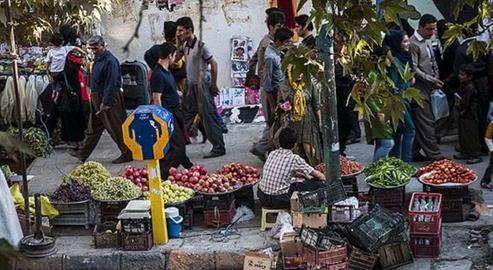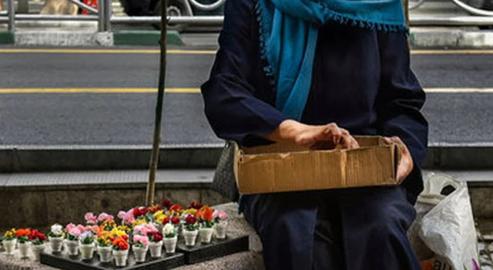Official statistics as reported in Iranian media indicate that at least 4,000 itinerant peddlers and vendors hawk their wares on the streets of Tehran. Of these, only about 10 percent are in some way organized; the vast majority fend for themselves. Two recent reports by Tehran Municipality and the police have shed light on the scale of this phenomenon - and what law enforcement think of the women involved.
The detailed report by Tehran Municipality put the true number of vendors and peddlers at closer to 5,500 people. Of these, about 3,900 were street vendors with stalls and close to 700 carried their goods door-to-door, with the rest using a combination of small carts, vans and motorbikes. Most of them, about a quarter, lived in District 19 of the city, with the next-largest number based in District 12.
The same study examined the socio-economic situation of peddlers and street vendors. Some 22 percent of those identified were described as being in poor health. Forty percent had been fired or made redundant from their permanent job, and 40 percent were only semi-literate. Most did not originally hail from Tehran but came from East and West Azerbaijan, Zanjan and Ardebil provinces, with smaller numbers from Kurdistan, Kermanshah and Ilam.
The local authority also surveyed the types of goods being sold informally on the streets of the capital. In total, it found, 46 percent of the products on offer were clothing and shoes, and 20 percent were comestibles. The next most popular items for sale were stationery, decorations and electronic gaming devices, followed by horoscopes.
Tehran Munipality’s report also touched on the issue of how peddling is managed in the city. It stated that in general, verifying and registering these traders, and issuing them with permits and ID cards, had only had a patchy success record due to the municipality’s scant resources and the peddlers’ own resistance. Women peddlers were identified as the most vulnerable group because of the harassment they faced in the course of their work.
What do we know about women peddlers in Tehran metro?
A recent ”investigative” report by Iranian law enforcement examined on the socio-political status of female peddlers, with a focus on those who sold their wares on the Tehran metro. The authors divided these women into three questionable categories: “conservative”, “frustrated” and "satisfied".
“Conservative” women peddlers were described as those who entered into the trade involuntarily, to help support their families. They were described by the police as “respectful mothers” and “dignified” individuals terrified of being recognized, who therefore tended to operate in far-flung locations, with their faces covered. They were generally of “decent appearance”, the report stated, and could be relied on not to antagonize buyers.
The report then turned to the so-called “frustrated” ones, defined as “single girls and divorced women" and making up the majority of those found selling goods on the metro. Many of these women, the report said, had a high level of education but had been left dissatisfied in their previous job, or were unable to find suitable work. It was claimed these women were physically defined by "lack of motivation in the type of clothing and makeup" and "not wearing happy and energetic colors".
Finally, there were the supposedly “satisfied” women peddlers. Most of these women had migrated to Tehran from other cities, the report said, and were generally pleased to be recognized by metro passengers and station staff.
Another, previous report by the Iranian police looked into the relationship dynamics between female metro peddlers. Regardless of their background, police assessed that they were mostly “sincere” and “non-prejudiced” in their dealings with one another, and had “a positive feeling of belonging” to the wider group. However, it said, they faced near-daily physical, verbal and sexual harassment, including from metro employees.
Related coverage:
Female Peddlers Tell of Sexual Harassment on the Tehran Metro
Smuggled Afghan Children Working as Street Peddlers
Bedding Down on Buses in Tehran
Blind Street Vendor Turns to Twitter and Instagram During the Pandemic


























comments